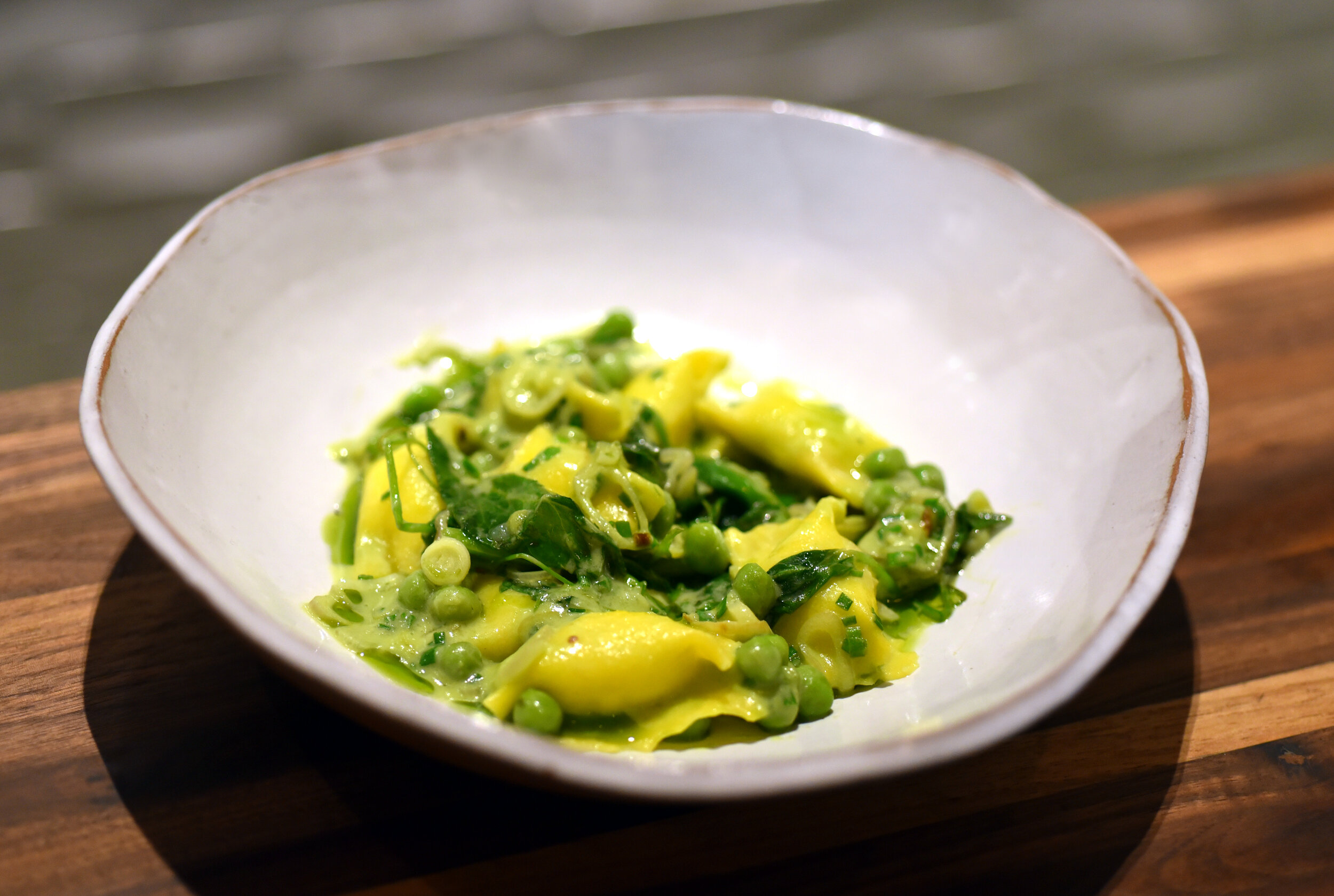Animal Advocacy and Eating Meat Can Collide
I am a conflicted omnivore. I think many of us are.
We're aware of how big dairy, meat, and fish operations work. We try to buy pasture-raised eggs, grass-fed beef, and free-range chicken. We limit our meat intake and rotate non-animal protein in, too. For some, this is purely for the health benefits that higher-quality food provides. For others, because those products taste better than their mass-commercially produced counterparts. And for those like me, it's those two things along with the fact that they're the only marker we have to assure the animals are getting the best care they can before we consume them.
But we know those safeguards don't promise much. Hence the conflict.
I recently interviewed chef Kevin Adey of Faro in Brooklyn for a Village Voice profile. While his restaurant is most lauded for his house-made pastas (gloriously captured below by Michael Tulipan), we fell into a discussion about how he took working with whole animals one step further than even many of his contemporaries. The following excerpt from the interview is a fortifying example of how chefs can really lead the way in helping farmers and ranchers treat their crops and animals with respect while still eking out a profit.
Whenever I get a glimpse into a kitchen like Adey's it makes me exponentially more hungry to eat my meat there... even if his joint is in Bushwick, and I'm far across the river and up in the Heights. My sights are on you, Faro. Until we meet, I'll keep my eyes on this.

Animal Advocacy and Eating Meat Can Collide
Chef Kevin Adey as told to Jacqueline Raposo, August, 2016
Doing what you want to do is a big part of being a successful chef. When you’re forced into something, it’s never going to feel as good as if you wanted to do it. That was my biggest fear with Faro: I know how to fix things when they’re going under – putting a burger on, or doing a shitty brunch – but if things didn’t go well, I’d be trapped owing people money and not doing what I wanted to do for the rest of my life. That was the really frightening part; knowing how to fix it with something I don’t want to do. We don’t have a burger on the menu very specifically. I don’t think every restaurant in Brooklyn needs a burger… even though they’re tasty and delicious.
Something we’re doing right now that took me over a year - to get to the point - is running Rose veal.
Veal production is a dairy operation. Dairy farms need to have more cows so that the cows produce more milk. Half of the cows born are female; they get older and make more milk. The other half are male cows. They immediately get shipped off to some terrible place. It’s animal abuse, and it’s terrible, and they become the veal you see in terrible stores and restaurants.
Rose veal is from a farm where they raise the cow with the mother. They live twice as long as a regular commercial veal cow, a commodity veal cow. They’re not white, they’re red, but they’re more rosy colored because they’re eating milk and grass, and walking out in pasture. So in buying them, it’s ensuring that fewer cows go to a very bad place. It also helps farmers stay in businesses; it's something that normally doesn’t make them any money, since male cows don’t make them any money. So if they keep one around for 13 or 18 months and sell it for more money than a regular cow, they’re doing really good. So for me, this is the pinnacle of sustainability, to support farms like this, and to keep an animal from the worst fucking possible conditions. I’m a huge animal advocate. The farm I buy from is Animal Welfare Certified. And I’ve been there. I’ve seen the way [the farmer] treats the animals; they couldn’t ask for a better life. That’s what I’m so super proud to be serving that right now.
I’ve been cooking for a long time. What changed me on all of this was that I was buying from nice food farm cooperatives, where three or four guys come together and ten farms come with their 100 cows, and they slaughter them at the same time. They’re raised all the same way, and then you can buy parts. I would buy a quarter cow at a time – I can’t get any bigger than that, since they weigh too much and we can’t carry it. Then, four or five years ago, I decided to raise a pig myself and kill it myself, to see if I could do it and still eat meat. And I did it, and it was extremely difficult and life changing. From that moment on I was like, the effort it took to raise and transport it, every aspect of it… it’s hard, hard work to be a farmer. At that point I made a decision to be a whole animal guy. How can I pick and choose these parts of my beliefs?
It’s such a huge difference with what we do in the restaurant now. We were running pork chops at this place I was at before that had thirty seats. We were selling chops every night in a place that wasn’t even that busy: we used the chops of five hundred pigs a year. That’s a small little place! A mom and pop place with thirty seats, doing a million a year in sales, was responsible for the death of five hundred pigs! I figured it was way worse at other places. So I decided to go to into using whole animals, and we dropped from five hundred to twenty four. That’s a far less amount of killing, gas, water, methane emissions, transportation etc. Now, I’m at even lower, twenty to twenty-two pigs a year, and I’m twice as busy as I was at the other place. Being good at utilizing these whole animals… I guess that’s the biggest overall change for me as a chef.
In the industry, this is very important to me. I saw a guy online the other day who works for a major food blog in NYC talking about Creekstone Farms like it was in any way good. I was embarrassed. Because this guy is an authority. Creekstone sells commodity beef. I was stunned, because is having a cool website and a picture of a cow and saying it’s corn fed what it takes? That’s what they’re advertising--I went to the website to make sure. This guy is allowing other chefs to think that’s okay. Because there’s no transparency, a guy can sell a rib chop from Creekstone for $130. Every single cow that McDonald’s has sold ate grass while it was growing up and then went to a feedlot and ate corn. Animals love corn – it’s like Cheetos to them. You don’t have to trick them into doing that. It’s literally like Cheetos. They will knock shit over to get to it, but it’s gonna kill them.
I think people need to be educated. They need to be educated that “grass fed and grain finished” is another term for commodity. But I think a lot of people don’t care. They can’t see what they’re eating. If they went to one of these farms they would say, “I wouldn’t drink the milk that comes out of that.” I’m not PETA. But it needs to change on a federal level. And we’re way at the bottom of that. The change has to happen from people in the media talking about restaurant doing things the right way. It’s not hard to do what most places do. It’s so easy to cut a package of eight rib chops. It’s hard to get people away from it, especially if you’re touted for it.
I don’t think there’s anything that can be done to change the whole system. As someone who is an animal advocate, I’m glad that people come here because the meat is good. But I’d rather them come here just because it’s tasty. The selfish nature of the chef is that I want you to say that it’s really good – but I guess both reactions are fine.


